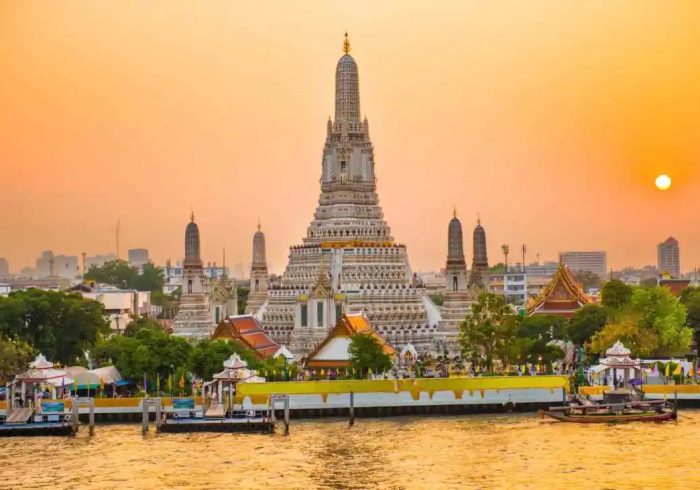Porto, Portugal’s charming riverside city, offers more than just stunning architecture and famous wine. For travelers seeking authentic experiences, the question of What To Do In Porto goes beyond sightseeing. Porto invites you to dive into its rich culture, savor its culinary delights, and connect with its vibrant local communities. This guide will help you discover meaningful cultural encounters in Porto that go beyond the typical tourist trail, offering a genuine sense of place and a deep appreciation of this unique city.
Discover the Historic Heart of Porto
When considering what to do in Porto, a visit to its historic center is essential. The Ribeira district, a UNESCO World Heritage site, is a mosaic of narrow streets, colorful houses, and lively plazas. Wander along the Douro River, where fishermen, street musicians, and artisans come together creating an atmosphere full of life.
Exploring Porto on foot allows you to experience its layered history firsthand. Pay attention to the azulejos—traditional blue and white ceramic tiles—that adorn many buildings, telling stories of the city’s past. Stop by the iconic São Bento Railway Station, where breathtaking tile panels depict 19th-century Portuguese life.
Engage with Porto’s Art and Craft Scene
For those wondering what to do in Porto beyond landmarks, immersing yourself in local art is a rewarding choice. Visit the contemporary art galleries in the Miguel Bombarda district, where innovative Portuguese artists showcase their work in converted warehouses and studios.
Handmade crafts are another way to connect with Porto’s culture. Seek out shops selling traditional ceramics, embroidery, and cork products. Many artisans welcome visitors to their workshops, providing insights into their craft and creative process. These encounters offer an intimate perspective on Porto’s living traditions.
Experience Porto’s Culinary Culture
Food is central to understanding Porto’s identity, making gastronomy a key answer to the question what to do in Porto. Begin your culinary journey with a visit to Mercado do Bolhão, the city’s iconic market where local vendors sell fresh produce, fish, and traditional snacks.
Don’t miss tasting the francesinha, Porto’s famous sandwich layered with cured meats and drenched in spicy sauce. Pair your meal with a glass of locally brewed craft beer or, of course, a tasting of Port wine—Porto’s world-renowned export. For a truly meaningful experience, join a guided food tour that connects you with local chefs and food artisans, learning about the stories behind each dish.
Explore the Port Wine Cellars with Local Experts
A defining feature of Porto’s cultural landscape is its Port wine heritage. When deciding what to do in Porto, a visit to the wine cellars across the Douro River in Vila Nova de Gaia is indispensable. Many cellars offer in-depth tours led by passionate sommeliers who explain the history, production process, and nuances of different Port varieties.
Choose a cellar that emphasizes sustainable practices or family-run traditions for a more authentic encounter. Tastings here are not just about the wine, but about the stories and craftsmanship passed down through generations.
Participate in Local Festivals and Traditions
To truly understand what to do in Porto for meaningful cultural encounters, timing your visit to coincide with local festivals can be enriching. The Festa de São João in June is Porto’s biggest celebration, where the city fills with music, dancing, street food, and fireworks. Join the locals in their joyful traditions like hitting each other gently with plastic hammers and releasing sky lanterns.
Other cultural events include Fado nights—Portugal’s soulful music genre—offered in intimate venues where you can feel the emotion behind each song. These experiences provide deep cultural insight that visitors often miss.
Walk the Douro Riverbanks and Connect with the Locals
One of the simplest answers to what to do in Porto for genuine interaction is to spend time along the Douro riverbanks. Early mornings and late afternoons see locals gathering for strolls, exercise, and socializing. Strike up conversations at riverside cafés or watch artisans at work on their boats.
Take a traditional rabelo boat tour operated by local families who once used these vessels to transport wine barrels. Their stories illuminate the city’s river culture, adding a personal dimension to your visit.
Discover Porto’s Neighborhoods Off the Beaten Path
Exploring neighborhoods beyond the center enriches your understanding of Porto’s daily life. Areas like Bonfim and Campanhã offer vibrant street art, quirky cafés, and community projects. These districts are often overlooked but bursting with authentic experiences.
Here, you can visit independent bookstores, meet local musicians at small venues, or join workshops in crafts and cooking. Engaging with Porto’s contemporary culture in these neighborhoods answers the question of what to do in Porto in a way that honors the city’s evolving identity.
Visit Museums That Tell Porto’s Story
Museums in Porto go beyond displaying objects; they narrate the city’s soul. The Serralves Museum of Contemporary Art sits in a beautifully landscaped park, offering a blend of nature, art, and architecture.
The World of Discoveries museum provides interactive exhibits about Portuguese explorers and their cultural exchanges, helping visitors understand Portugal’s global historical impact.
The Soares dos Reis National Museum showcases Portuguese art and sculpture, inviting reflection on national identity through visual storytelling.
Including museum visits in your itinerary highlights what to do in Porto for those who want a deeper cultural context.
Engage with Porto’s Culinary and Creative Workshops
Another meaningful way to answer what to do in Porto is to join hands-on workshops. Many local chefs and artisans offer classes in traditional Portuguese cooking, ceramics, or tile painting. These immersive experiences provide personal insight and skills while connecting you directly with Porto’s cultural heritage.
Whether it’s learning to make pastel de nata or crafting your own azulejo tile, these activities create lasting memories and a true sense of participation.
How to Travel Responsibly in Porto
Understanding what to do in Porto also involves respecting the city and its people. Supporting local businesses, choosing eco-friendly tours, and engaging with communities ethically ensures that your travel positively impacts Porto’s future.
Consider staying in family-run guesthouses, buying souvenirs directly from artisans, and using public transport or walking to reduce your footprint. This mindful approach aligns with the ethos of 21 Sensations, inspiring journeys that are both authentic and sustainable.
Summary: What To Do In Porto for a Deep Cultural Experience
To summarize, what to do in Porto for meaningful cultural encounters involves:
- Exploring the historic Ribeira district on foot
- Visiting contemporary art galleries and artisan workshops
- Enjoying Porto’s rich culinary scene at markets and food tours
- Touring Port wine cellars with knowledgeable guides
- Participating in local festivals like Festa de São João
- Walking the Douro riverbanks and connecting with locals
- Discovering lesser-known neighborhoods with authentic charm
- Visiting museums that reveal Porto’s cultural layers
- Joining hands-on creative and cooking workshops
- Traveling responsibly with respect for local culture and environment
These activities provide more than just sightseeing; they offer an immersive, personal connection to Porto’s heart and soul.
Final Thoughts on What To Do In Porto
Porto is a city that rewards curiosity and openness. If you are wondering what to do in Porto beyond typical tourist spots, focusing on authentic, cultural experiences is key. By engaging with its people, traditions, and stories, your visit becomes a meaningful journey that reflects the true essence of this captivating city.
For travelers who seek more than just pretty views, 21 Sensations encourages embracing Porto’s culture with all your senses, creating memories that last long after you leave.



